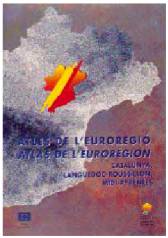Los ríos de la zona árida peruana (2013)
In November 2013, the University of Piura (Peru) and the ICC published the book "Los ríos de la zona árida peruana", by Gonzalo de Reparaz. This is the edition of the research work that Reparaz completed in 1966. This work has been the result of the request made by the University of Peru to the ICC. Gonzalo de Reparaz (Sèvres 1901 - Lima 1984) was a great connoisseur of the dryness problems of Peru. He conceived and created the Instituto de la Zona Árida Peruana, with the funding of UNESCO, in agreement with the government of Peru. He was passionate about the Peruvian water system and systematically studied the rivers of the Pacific watershed. He traveled through all the basins and, as a result of his theoretical knowledge and field work, described, photographed and mapped each basin in detail, compiling data between 1911 and 1965. The most well-known aspect so far of this period was, without a doubt, the discovery of the Colca Canyon, in 1955, one of the deepest on Earth. This finding must be contextualized, precisely, as an integral part of this brilliant work carried out by Professor Reparaz. The book is accompanied by a series of tables, graphs and maps that Reparaz prepared for the study of rivers.
Institut Cartogràfic de Catalunya (ICC); Universidad de Piura, Peru.
Financed by: Universidad de Piura, Peru.
The Mediterranean Environmental atlas (1997-1999)
This study explored the environmental bases of the socio-economic functionality of the entire Mediterranean territory starting from the structure of its ecolandscape, working on the hypothesis that the socioecological landscape reflects both the history of human activity and the inherent potential of the territory. It aims was to complete the work undertaken for the Western Mediterranean during 1995 and 1996. It consisted of one image for the entire basin and other images to illustrate phenomena in this geographic area.
Institut Cartogràfic de Catalunya (ICC); Institut Català de la Mediterrània d'Estudis i Cooperació, Barcelona, Spain; Estudi Ramon Folch SL, Barcelona, Spain; MultiCriteria Consulting, Barcelona, Spain.
Financed by: Institut Cartogràfic de Catalunya (ICC); Institut Català de la Mediterrània d'Estudis i Cooperació; Agencia Española de Cooperación Internacional (AECI), Madrid, Spain.
Atlas of the Euroregion (1992-1995)
Production and publication of a geographic atlas of the Euroregion -Catalonia, Languedoc-Roussillon and the Midi-Pyrénées. The ICC participated in the planning of the project, the preparation of various general and thematic maps of the Euroregion as a whole, the writing of texts and the final quality control. The atlas covers geopolitical, physical and socio-economic aspects, as well as the dynamics of the three regions.
Institut Cartogràfic de Catalunya (ICC); Institut National de la Statistique et des Études Économiques (INSEE) of the Languedoc-Roussillon, Montpellier, France; Institut National de la Statistique et des Études Économiques (INSEE) of the Midi-Pyrénées, Toulouse, France; Groupement d'Intérêt Public Reclus (GIP-Reclus), Montpellier, France; Institut d'Estadística de Catalunya (IEC), Barcelona, Spain; Direcció General de Planificació i Acció Territorial (DGPAT) of the Generalitat de Catalunya, Barcelona, Spain.
Financed by: Région Languedoc-Roussillon; European Union.
Atlas of Andorra (1991)
The aim of the project was to publish a geographic atlas containing both general and thematic information, with graphic material and texts relating to the Andorran parishes and aspects of the physical geography, demography, economy and services of the Principality. This project was commissioned by the Conselleria d'Educació, Cultura i Joventut of the Government of Andorra, to be included as part of this Ministry's project focused on pedagogical material for Andorran education and the Andorran school.
Institut Cartogràfic de Catalunya (ICC) and other participating institutions: Conselleria d'Educació, Cultura i Joventut (Govern d'Andorra).
Financed by: Conselleria d'Educació, Cultura i Joventut (Govern d'Andorra).

 Contact
Contact








